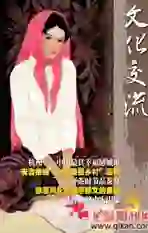Chinese Artists in Japan in Early Qing Dynasty
2009-06-05QiuWen
Qiu Wen

Artists appeared in Zhejiang as early as 7,000 years ago when they painted patterns as testified by the pottery unearthed at Hemudu in todays Zhejiang, a coastal province in east China. Zhejiang has been a cradle of a galaxy of outstanding painters and calligraphers since very ancient time. The art of each dynasty since the Song (960-1279) was highlighted by national masters from Zhejiang.
On the other hand, Zhejiang in ancient times served as a gateway for Japanese visitors who came to China hundreds of years ago. Some of these Japanese visitors were artists. They painted in Zhejiang and learned the Chinese art here. As time went on, some Chinese artists went eastward to Japan.
The ancient Chinese artists in Japan have attracted modern academic attention. Scholars from both Tama Art University of Japan and the Nanjing Academy of Arts of China have joined hands in a research into the life of Shen Quan (1682-1760), a Chinese artist who lived in Japan in the Qing Dynasty (1644-1911). Modern Japanese art galleries and museums display masterpieces of some Chinese artists of the early Qing Dynasty. The Chinese artists brought new ideas into Japanese art and influenced the art in the island nation.
Here are brief summaries of three Chinese artists who had their roots in Zhejiang and lived in Japan in the Edo Period (1603-1867) of Japan.
Yiran
Yiran was born and brought up in Hangzhou, now the capital city of Zhejiang Province. In his childhood years he had a hobby for painting and grew up to run a pharmaceutical business. Three years before the collapse of the Ming Dynasty (1368-1644), he realized the end of the dynasty was approaching and sailed eastward to Japan to flee the approaching chaos. After the Emperor Chongzhen committed suicide and China went under the rule of the Qing Dynasty, Yiran decided to stay in Japan. He became a Buddhist monk. He painted religious stories in his spare time and his artworks attracted the attention of some Japanese artists. Some Japanese became his disciples. The most famous were Jakushi Kawamura and Watanabe. There appeared a Yiran school in Japan.

Yiran is best known for his paintings of Buddhist stories. He depicted individual expressions and personalities from standardized images. The figures under his brush look vivid. Maitreya, the fat laughing Buddha, highly embodies the art of Yiran. In the painting, Maitreya looks optimistic and natural, highlighting the wisdom that his signature laughter and bulky physique can embrace all the worldly challenges and difficulties.
Xinyue
Xinyue was one of the Zhejiang artists who arrived in Japan after the downfall of the Ming Dynasty. The versatile artist was warmly embraced by the royal court and the ordinary people. During his 20-plus-year stay in Japan, he made contributions to the countrys painting, calligraphy, seal engraving, architecture, music, and medicine. Shen also taught some Japanese disciples. His paintings had impact on some Japanese artists.
Shen Quan
Yiran and Xinyue were two folk artists who arrived in Japan during the ban on maritime trade with foreign countries imposed by the Ming Dynasty (1368-1644). After the Qing Dynasty lifted the ban, Shen Quan, a master painter from Zhejiang, was invited in 1729 by the king of Japan to stay in Japan for three years. Though Shen Quan had only one Japanese disciple, his style was widely noticed by other Japanese artists.
Cultural Exchanges
The three artists from Zhejiang had one thing in common: the art they displayed and taught in Japan was highly characterized by a literati style developed in China by some scholars. The essential idea behind the style, that painters should learn to write poems and study calligraphy, was popular with Japanese artists in the Edo period in Japan. It was widely recognized that it was a regretful thing if painters failed to appreciate poetry and calligraphy. Japanese artists of that time wanted to make breakthroughs from the sluggish progress of art in Japan. So they studied Chinese art for inspiration. The copies of Chinese masterpieces were widely used. Artists from China were another important inspiration for Japanese artists. The literati style was eagerly absorbed in Japan and something new with distinct Japanese characteristics appeared.
During the ban period, the artists who came from China to visit Japan were mostly amateurs. Their favorite subject was Buddhism. Some artists introduced painting of landscape, and painting of flower and bird in an expressionist style to Japan, which influenced Japan for about 200 years. There was an art school named after Shen Quan, which lasted for nearly 200 years in Japan.
After the ban on maritime trade was lifted in the Qing Dynasty, the cultural exchanges between China and Japan became normal again. Shen Quan and other professional artists brought a decorative art to Japan. The decorative style was a mixture of court painting and folk painting in the Ming and Qing dynasties, characterized by splendid colors and precise brushstrokes. The artists of the early Qing Dynasty left very fine impressions in Japan. Their masterpieces are not only the treasure of Japanese culture, but also the witness to the friendship between China and Japan. □
